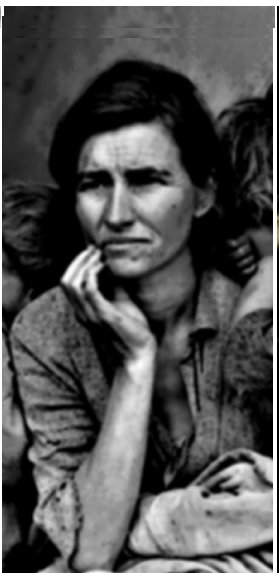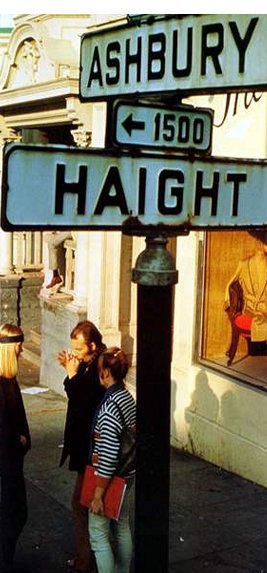Reconstructive Surgery Silvia Castro
Roger Lotchin is an urban and western historian. His writing
has centered on the history of nineteenth and twentieth century California
cities. He completed his Ph.D. in history from the Unversity of Chicago
in 1969. In 2005, he served as president of the Urban History Association.
Lotchin is currently a professor at the University of Northern Carolina with
courses in urban, World War II, and western history.
The west has always been a dream
land for foreigners to escape their troubles and gamble their ruined life in
exchange for instant success. Without the vast immigration of these
luck-speculators who brought expansion and a sudden market, San
Francisco would have most likely remained a
one-dimensional mission town: deserted and poor in its array of disorganized
culture. In a single decade, the Bay City came to be one of the most sought
after places to live because of its ¡§urban variety, diversity, and complexity¡¨
that welcomed all people who were looking to better their lifestyle.1
A city whose only history before the drastic urbanization was the
Mexican-American War exemplifies the difficulty of planning and deciding upon
the city¡¦s organized structure. No one was ready for the abrupt
population change. Starting off with a small population of about one thousand,
the small hamlet, after the Gold Rush, experienced an ¡§orgy of growth¡¨ that
would continue with the years as the city became more experienced from the
social camaraderie between residents to political appearances that would try to
terminate certain vices.2
Embodied in Roger Lotchin¡¦s San Francisco 1846-1856 From Hamlet
to City, the city became a port of new ideas, causing an influx of people
awaiting to make their mark on this untouched bay city.
At the beginning of the book, the
author illustrates the malfactors of the poorly developed settlement in 1846.
The Mormons who first occupied the lands in the 1830¡¦s were the only ones who
brought any significant expansion to the bay, and even then, the augmentation only
colonized a little under nine hundred of these religious residents, not enough
to commercialize the area with trade benefits. Even the Gold Rush brought few settlers
who wanted to permanently stay; therefore, building a municipal society was
difficult. But as people poured into surrounding areas, such as Stockton
and Sacramento, a friendly
competitive atmosphere emerged. Clipper ships needed to transport goods to
populated and enriched cities, but the narrow and shallow waterways proved this
task to be impossible. However, fortunately for Yerba Buena, San
Francisco¡¦s original name, this problem was the spark
plug that would jump start the town¡¦s financial system. The ships had to reload
their cargoes onto smaller boats, and the Bay City
became the ¡§beneficiary of a transportation break in the gold min[ing]
commerce.¡¨3 Communication and transportation developed
within the city. Jobs became more abundant, but the enormous rate of interest
revealed the difficulties of the weak banking structure. Private hiring
exchanges like the YMCA ¡§maintained employment agencies¡¨ to ease the burden of
debt.4 Heavily relying on outside help for investment loans, more
men began to petition the expansion of the city¡¦s manufacturing system. Soon
enough, a broad number of individual or small groups of industries rounded out
the industrialization of the city, such as ship building, food processing,
wharf construction, and flour mills. With the increase of population and the
flux of prosperity, social distinctions also increased and segregation emerged
because of the residential zoning districts where the working class migrated
towards Market Street,
living closer to their work. By the mid-nineteenth century, the urban people
began to adapt to their environment and started to care about the business,
politics, and social composition of their soon-to-be home.
The transitory nature of the early
society, the skewed demographics, and the boom and bust nature of the economy
led to a culture that was peculiar to San Francisco.
During 1848, San Francisco was
still a rootless community with no real native residents. Americans, even
though most were not locals, welcomed foreigners to San Francisco and
experienced a feeling of camaraderie among residents, yet they did expect the
immigrants to ¡§conform to certain American standards and values¡¨.5
At first, they opened their arms to foreigners from western and northern
Europe, but they quickly displayed a racial hierarchy. For example, many
Americans thought all Australians were disgusting ex-convicts. Residents
preached a melting pot society but rarely practiced toleration. Slowly and
surely, they maintained their aloofness towards the African, the Chinese and
Latin Americans. While keeping stereotypical perspectives of each group, they
referred to Latin Americans as ¡§greasers¡¨ and saw them to be nothing more than
¡§shiftless, dirty, cruel and lazy¡¨ beings.6 As
economic factors shifted, tolerance for diversity shifted as well. Because
of peoples¡¦ relocation from eastern United
States to the west, integration occurred
within isolated regions¡Xlike southerners and Yankees. Schools became a safe
cultural community where children were exposed to others of different
backgrounds in a positive way and learned each others traditions. Children grew
up with a sense of difference, but not realizing whether difference is bad or
good¡Xbut just an understanding that other races existed. However, constant competition between housing and job wages impeded
the gentle welcoming in the United States. The former hamlet became a battleground where
families had to decide whether to stay and learn to call this place ¡§home,¡¨ or
leave and go back to their familiar abodes. On the fence, many miners finally
decided to stay and bring their family, because they were optimistic and felt
that success was near.
With no sophisticated police force
or judiciary system, the crime rate increased. In the years after 1848, the
¡§rascals multiplied and the notoriety of the city grew apace,¡¨ because of the
temptation from the lack of consequences, since the weak court system often
delayed cases.7 The Vigilance Committee of 1856, consisting of
average civilians who were concerned with the reputation of their community,
quickly re-shaped San Franciscan police force. It helped reform San
Francisco politics by attacking political corruption,
and brought the People¡¦s Party (populists) to power. The Vigilance Committee
also reformed gender politics in San Francisco
as well. Before the committee had a strong influence, middle-class American
women arrived in the city ready to become active in their new community, and
they gained a prominent place in public political discourse in San
Francisco. Their opinions were sought out, listened
to, and debated by other women and men. However, soon afterward, the vigilantes
started to set the agenda, not only for the summer of 1856 but for years
afterward, and that agenda consisted of politics in deeply masculine terms.
Vigilantes, who excluded women from committee headquarters and increasingly
ignored or refused to print women¡¦s letters in the newspapers, created a
political climate in San Francisco
that was anything but conducive to women¡¦s political activism. Perhaps, then,
it is not surprising that no woman suffrage organization existed in San
Francisco until after the Civil War and the demise of the People¡¦s Party.
In the second half of the novel,
representing also most of the second half of the decade, Lotchin depicts
women¡¦s significant role in society outside of politics. The presence of women
was not only a family concern, but a public concern because the women would
¡§lend stability and improve the quality of urban life.¡¨8 The climate
had changed dramatically from an area where men with picks in their hands lived
miles away from their families, to a modernized city where women became
involved in every aspect of life. These wives who came from the east were set
to transform the bay into a safe and appropriate habitation for their family.
The immoral climate had changed from 1846. Women joined with the support from
the press to petition prohibition. People changed their mindset about gambling
and prostitution after reading about the Cora case in the newspapers, which
involved two men arguing inside a theatre because one man, Charles Cora, was
insolent enough to invite a prostitute, Belle, into the public building, where
James King of William felt uncomfortable having his wife sit in the presence of
a whore. The public attention from the case represented the conservative shift:
the Bay City was no longer a toy
store for men to run around, but now a home to share the love between family
and friends. San Francisco
constantly kept in mind the general welfare of the community as its ultimate
goal, but ¡§the means¡Xdemocracy, liberty, or progress¡Xvaried.¡¨9
Lotchin takes pride in the rapid
growth of the ¡§instant city¡¨ that was able to come together and prove that even
though its early history did not supply a solid foundation, it still bred a
prosperous metropolis.10 The cultural, political, and social changes
shifted with the people and surroundings, accommodating the residents of the
cosmopolitan city, where everyone differed from wage earnings, to religious
background, to marital status. He tells the history mostly chronologically with
different perspectives from people moving into the city. Lotchin also shows
that if the people voiced their opinions, their wants, and their necessities,
they could produce the city that they never thought would be home. San
Francisco would grow in number and economy with the
United States Mint and assay offices, and garner much wonder and awe from the
eastern side of the country.
San Francisco 1846-1856: From
Hamlet to City was written in the early seventies, at a time when hippies
had already made their mark and ¡§peace¡¨ was the saying to shout wherever and
whenever. Lotchin was influenced by an era when people did not trust their
government. Following the end of the Vietnam War, people at that time wrestled
against the government and petitioned for reform, expressing what was best for
the American people, not just for the country¡¦s foreign policy. Lotchin is a
social and political historian who focuses on the wants and needs of people
living in San Francisco to show how
successful the development was compared to the initial assumption of the residents.
Originally that city had no systematic city government, though the fault did
not lie within the administration, since no previous management existed in that
bay before 1846; San Francisco had
no history. It was only a ¡§drowsy hamlet of 1846 or the frantic, makeshift town
of 1849.¡¨11 But within a century, San Francisco
grew to be a bustling conurbation at the heart of the state¡¦s commerce.
Two scholars share similar
perspectives on behalf of Lotchin¡¦s work. Both critics, Roger Simon from Lehigh
University and William Mulligan representing Eleutherian Mills-Hagley
Foundation, praise Lotchin¡¦s careful breadth of the traditional urban biography
which covered that decade in ¡§exhausting comprehensiveness¡¨.12
Admiring his theme as the city¡¦s struggle to establish ethics, Simon observes
the authors persistence in showing the competition between public and private
matters, but Lotchin falls short to recognize which parts of San Francisco had
more than just a local identification. There is little to no connection to
surrounding states, which is significant because of the Golden Gate
city¡¦s vast economy. Also, mentioned by Mulligan, Lotchin¡¦s book does not
succeed in its thorough elucidation of the economic factors behind San
Francisco¡¦s growth, leaving out major industrial
projects. However, overall, both reviewers extol the book as a better way ¡§to
understand just what urbanism [is] and what it demand[s] of urbanites.¡¨13
Lotchin¡¦s criticisms seem valid; California
was but a deserted place only occupied by Spanish missionaries and Native
Americans. Constructing the foundation of a whole city in only ten years,
especially when people come from all over and differ in viewpoints and
religious background, would be difficult, if not unattainable. San
Francisco was a cosmopolis where new ideas were
exchanged and quickly people predicted its richness, years before it would
become prosperous. However, Lotchin fails to supply enough information on the
relationship between the national government and the city government, especially
lacking information about the shift from territory to state. Lotchin focused
his perspective more on the surrounding areas and less on the relationship to
the United States.
For example, Lotchin never addresses why the state petitioned for statehood and
how it changed the governing body of San Francisco.
The southern cities like San Diego
and Los Angeles are never mentioned
a comparison between cities that could have allowed a deeper analysis of the
cities¡¦ rise from the Spanish culture to a more diversified society. Lotchin
discusses the San Franciscans and the diversity that they brought from foreign
countries, rather than the immigration of New Englanders and southerners. The
reader therefore understands that San Francisco has been a ¡§world city from the
very beginning¡¨.14 However, it would have been more educational if
Lotchin had expanded the time period a little over a decade or gave a synopsis
of San Francisco in its later years, in order for people to link the effects of
each change to an event in the city¡¦s future.
California,
with its booming cities that emerged from the Gold Rush, had proved to the
federal government that an investment in statehood would be beneficial to the
country. With the dream of Manifest Destiny, railroad companies longed for the
passage to the Atlantic Ocean and California
made that dream come true. Many in the Eastern United States,
especially poor white men in the South, like the Know-Nothings who rallied for
free labor, sought after the abundant farmland that eventually produced
millions of barrels of wheat. Especially after the Panic of 1837, families all
over the country wanted to leave the economic turmoil and try to lead a
prosperous life. Looking for peace and stability, many people saw California
as a haven. People came from all over the world, unlike other cities, for
example, New York, where all the
Germans gathered together in their own secluded communities. California
was a home to all: here they could work together and play together, with some
collisions like any other nineteenth century city. San Franciscans refused to
depend on the help from other states; it had ¡§agricultural products from Latin
America, flour from Richmond,
silk from China,
ice and apples from Boston, coffee
from Java, oranges from Tahiti,¡¨ but this was not enough
for the American city, it didn¡¦t want help.15 It wanted to
illuminate its economic status by itself.
The people in the eastern United
States saw California
as a local accomplishment. But the author differs from them and instead, views California
as an ¡§international project.¡¨16 These selfish citizens saw the
municipality as a money-making machine, a trading ship to help the nation
economically and socially. It was their door to the Far East,
an easier route to negotiate and trade with China.
Its history connected the United States
with Latin America, so that they could continue to have
a dominant role in foreign policies. Their statehood was a warning to Mexico,
that they were expanding and powerful. Lotchin sees California,
most importantly, as a diffusion of people and gives them credit for modeling
to the rest of the country the diplomatic aura that can exist between an array
of people. Compared to the east coast, California
was where people maintained their laid-back personalities while co-existing
with others and experiencing the ¡§era of good feelings,¡¨ a time where residents
looked back to the primitivism of the state and the success that had been
achieved and searched with optimism, for more progress in the near future.16
It took only a decade to build the vast city where people had
come to the Golden Gate with ¡§heads full of general rules¡¨ and where many
endeavored to ¡§reconcile the claims of different and contrary values¡¨.16
San Francisco didn¡¦t find the people; the people found San Francisco. Now, it
is a home, a business, and a social network where ¡§each institution, each
group, and each practice in the city justified itself in terms of its value to
the generality¡¨ and focused on the community before the individual.17
1. Lotchin, Roger W. San Francisco, 1846-1856: From Hamlet to
City. New York: Oxford University Press, 1974. 277.
2. Lotchin, Roger. 9.
3. Lotchin, Roger. 6.
4. Lotchin, Roger.
85.
5. Lotchin, Roger.
106.
6. Lotchin, Roger.
112.
7. Lotchin, Roger.
279.
8. Lotchin, Roger.
304.
9. Lotchin, Roger.
342.
10. Lotchin, Roger.
136.
11. Lotchin, Roger.
xix.
12. Simon, Roger.
¡§The Journal of Economic History.¡¨ JSTOR. 29.2
(1981): 746-747. 2 June 2008 <http://www.jstor.org/stable/17950>.
13. Mulligan,
William. ¡§The Journal of Economic History.¡¨ JSTOR.
40.1 (1980): 208 209. 2 June 2008 <http://www.jstor.org/stable/2120468>.
208-209.
14. Lotchin, Roger.
vii.
15. Lotchin, Roger.
vii.
16. Lotchin, Roger.
301.
17. Lotchin, Roger.
345.










